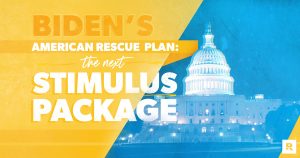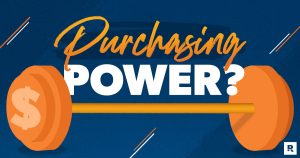Key takeaways
- Homeowners insurance mainly protects the borrower’s investment in their home, while mortgage insurance financially protects the lender’s investment in your home.
- Mortgage insurance, also known as private mortgage insurance (PMI), is typically required for borrowers who make a down payment of less than 20 percent when purchasing a home.
- Homeowners insurance, also known as hazard insurance, protects the homeowner’s investment by providing coverage for the structure, contents and liability among other coverage types.
- Homeowners can potentially avoid paying PMI by saving for a larger down payment, finding a lender that has its own mortgage insurance program or using a VA or USDA loan.
New homeowners may wonder whether “mortgage insurance” and “home insurance” refer to the same thing. While both are policies that can provide financial protection, they are very different types of coverage. Mortgage insurance — sometimes referred to as PMI — financially protects your lender if you default on mortgage payments; homeowners insurance financially protects your home with coverage for the structure and contents, as well as liability coverage. Bankrate knows that the two insurance types can be confusing, so our team of insurance experts put together this guide on what new homeowners need to know about mortgage insurance vs. home insurance.
Mortgage insurance vs. home insurance
The key difference between mortgage insurance and home insurance is who it financially protects. Homeowners insurance primarily protects the borrower’s investment, while mortgage insurance protects the lender’s investment in your home.
Mortgage insurance
Mortgage insurance, also known as private mortgage insurance (PMI), financially protects mortgage lenders if the borrower doesn’t repay their mortgage. Borrowers of conventional loans are typically required to buy PMI when they make a down payment of less than 20 percent when purchasing a home. The PMI premiums will be canceled after a certain portion of the mortgage is repaid. Borrowers of FHA and USDA loans who put down less than 20 percent typically also have to pay mortgage insurance premiums (MIP), which cannot be canceled in most cases.
Homeowners insurance
Homeowners insurance, also known as hazard insurance, may help repair your home’s structure and property from financially devastating losses like fires, storms and other perils listed in your policy. If a covered claim damages your home, your property insurer will help cover the repairs, minus your deductible. If your home has a mortgage, you will likely be required to carry homeowners insurance to help protect your mortgage company’s investment.
If you’re not already familiar, it can be confusing to differentiate between the two insurance types. The table below illustrates some of the differences between mortgage insurance vs. homeowners insurance:
| Covers | Homeowner directly and mortgage lender indirectly | Mortgage lender |
| Does not cover | A standard homeowners insurance policy typically excludes coverage for property damage caused by losses such as arson, flooding, sinkholes, mudslides and earthquakes. Check your own policy for coverage details. | The home’s structure, the homeowner or their personal property |
| Typically required for | A borrower financing their home purchase | A borrower making a lower down payment, usually less than 20% of the home’s purchase price |
| Payment form | Generally, the policyholder pays the premium directly to the insurance company or to the mortgage company, which then pays the homeowners insurance from the escrow account managed by the lender | Borrower pays monthly payments and/or a portion of closing costs of a home purchase to the mortgage insurer set by the lender |
| Average annual cost | $1,428 annual premium for $250K in dwelling coverage | 0.46% to 1.5% of the original loan amount |
What is PMI?
When you take out a loan to buy or refinance a home, a bank or financial lender anticipates that you will honor the terms of your loan and make monthly mortgage payments. Private mortgage insurance, or PMI, protects a bank or lender if you fail to pay your mortgage or walk away from the home and it goes into foreclosure. PMI provides the lending institution with a guarantee that its risk will likely be covered for lending you, the borrower, money.
PMI is usually required when you have a conventional home loan and make a down payment of less than 20 percent of the home’s purchase price. When refinancing, if your home equity is less than 20 percent of the value of your home, you might be asked to carry PMI, too.
Many borrowers qualify as low-risk borrowers but do not have the funds to put 20 percent down to purchase their property. A lender might see this as a concern. A borrower who cannot contribute a high enough down payment toward the purchase of their property may not be able to afford the higher monthly mortgage payments for the long haul in the eyes of lenders. That is where PMI comes in and may be factored into your loan.
How much does PMI cost?
The average cost of PMI is typically between 0.46 percent to 1.5 percent of the original loan amount and generally up to an additional $70 in monthly costs per every $100,000 borrowed. The type of loan you have, your credit score and your loan-to-value ratio can also affect the exact cost. PMI is most commonly paid as part of a monthly mortgage premium but may be paid as an upfront lump sum during closing. Specific PMI terms are defined within your loan estimate and closing disclosure.
PMI is arranged by the lender and provided by private insurance companies. A lender may or may not give you payment options, but you may request some. The most common ways to pay for PMI are:
- Monthly premium added to your mortgage payment
- One-time upfront premium paid at closing
- Combination of one upfront payment and monthly premiums
How can I avoid paying PMI?
There are several ways you might be able to avoid paying PMI:
- Save more for your down payment: If you delay your home purchase and can afford a larger down payment, it may prevent you from having to pay PMI.
- Ask the lender to pay: Some lenders will cover the cost of your mortgage loan, referred to as lender-paid mortgage insurance (LPMI). However, there is a tradeoff because you could have a higher interest rate on your mortgage if you go this route.
- Get a piggyback mortgage: Instead of getting one mortgage, you could have two. This is most often done in what’s called an 80/10/10 split, with an 80 percent first mortgage, 10 percent second mortgage and a 10 percent down payment.
- Find a lender with its own mortgage insurance program: Some lenders offer low down payment options without PMI. This could be for first-time homebuyers, low-income buyers or people with certain occupations, like doctors or teachers.
- Use a Veterans Affairs (VA) loan: If you qualify for a loan through the Department of Veterans Affairs, you may be able to get a mortgage without a down payment and avoid paying PMI.
- Use a USDA home loan: If you are considered a low- or moderate-income homebuyer and located in a qualifying rural area, you may be able to apply for a USDA home loan. These loans often come with low or fixed interest rates and don’t have a formal loan limit.
How long do I have to pay for PMI?
If you use an FHA loan to purchase your home, you may be required to pay PMI payments for the entire loan term. If you use a conventional private lender loan, once your home reaches 20 percent in equity based on the appraised value or purchase price (whichever is lower), you can typically request PMI be removed. There are four ways to remove PMI from your mortgage:
- Request cancellation: Once you fall below the 80 percent loan balance mark, you may request in writing to have your PMI canceled. You must be current on your payments, have a good payment history and may be required to provide proof the value of the home has not declined and there are no other mortgages or liens.
- Automatic termination: Once the principal balance reaches 78 percent of the original home value, the mortgage insurance servicer must automatically terminate PMI.
- Final termination: Once you have reached the halfway point of your mortgage’s amortization schedule, the lender must remove PMI. For example, the midpoint for a 30-year loan would be after 15 years of payments, regardless if you have reached 78 percent of the original value.
- Refinance: If you have owned your home long enough to meet a lender’s eligibility requirements, you may be able to refinance your existing mortgage into a new loan to remove PMI. Refinancing might work if your new loan’s balance is at least 80 percent below the market value of your home.
Remember that private mortgage insurance protects the lender’s financial interest — not yours — if you fall behind on your mortgage payments. If you don’t make your payments on time, your credit score will likely take a hit and you could default on terms of the loan, which may result in the loss of your house.
What is homeowners insurance?
Homeowners insurance may protect you from financially devastating losses if your home’s structure, other structures or personal belongings are damaged or destroyed by a covered peril. Without homeowners insurance, you would likely have to pay to repair your home or replace all your belongings yourself, which could be financially devastating.
Even in rare cases where your lender does not require you to have home insurance or if your home’s mortgage is paid off, most financial experts recommend purchasing home insurance to protect your investment in your home. The home insurance premium you will pay is likely small compared to the cost of repairing or replacing a home and belongings out of pocket.
You might consider consulting with a licensed insurance agent to help compare home insurance quotes and buy the right amount of homeowners coverage.
What does homeowners insurance cover?
Homeowners insurance policies offer different levels of protection based on the policyholder’s preferences. For example, a policy may offer coverage to replace your personal property at either actual cash value or replacement cost. Your policy may also have open perils coverage or named perils coverage depending on the type of home insurance policy.
Generally, most standard homeowners insurance policies include the following coverage types:
- Dwelling coverage: This covers the physical structure of your home.
- Other structures coverage: This covers other structures on your property, including detached garages, fences and barns.
- Personal property coverage: This covers your personal belongings, including furniture, clothing and electronics.
- Medical payments coverage: This coverage may pay to cover some medical fees if a visitor in your home injures themselves.
- Liability insurance: This coverage may help protect you from financial losses if you are found legally responsible for personal injuries or property damage others incur.
- Additional living expenses coverage: This coverage may help pay for additional costs associated with living elsewhere while your home is being repaired after a covered claim. Expenses may include hotel costs, food expenses and pet boarding.
The most common homeowners insurance perils are:
- Fire and smoke
- Windstorms and hail
- Lightning strikes
- Explosion
- Vandalism and malicious mischief
- Aircraft or vehicle
- Theft
- Falling objects
- Weight of ice, snow or sleet
- Water damage (but not flood damage)
Most standard home policies do not cover earthquakes, floods and sinkholes. For coverage against these perils, you’ll likely need to purchase a standalone policy or, if your company offers it, add a separate endorsement for an additional fee to be insured against a specific peril. Flood insurance, for example, may be purchased through the federally backed National Flood Insurance Program or private insurers. Your insurance agent can help you purchase these additional coverage types.
How much does home insurance cost?
The cost of homeowners insurance varies widely based on location, home characteristics, owner demographics and other risk factors. As a benchmark, the national average cost for $250,000 in dwelling coverage is $1,428 per year. In many cases, this expense will be spread out and drafted monthly with your mortgage payment to an escrow account. Your lender will then pay your insurance company once annually.
Is homeowners insurance required?
Homeowners insurance is not required by federal or state law. However, most mortgage lenders require this type of insurance coverage for as long as they have a financial interest in the home. Most insurance experts recommend purchasing homeowners insurance to protect your financial investment in your home and prevent potentially devastating out-of-pocket costs following a covered disaster. Depending on your home and your location, you may be able to find affordable home insurance with one of the cheapest home insurance companies.
Frequently asked questions
-
-
Your lender will likely require you to hold a home insurance policy to protect their financial investment in your home in the event of a disaster. If your home is damaged or destroyed by a covered peril such as a windstorm or fire, the lender wants to ensure that their investment is protected by a home insurance policy that will help pay for repairing or rebuilding your property.
-
Whether you are required to carry mortgage insurance depends on the circumstances of your mortgage. Most conventional and FHA loans without a 20 percent down payment will require private mortgage insurance. Most FHA loans require you to carry PMI for the duration of your mortgage, but most conventional lenders allow you to drop PMI once you’ve reached 20 percent equity in your home based on its appraised value.
-
Your monthly mortgage payment generally contributes funds to your escrow account. Your escrow account, which your lender manages, then pays your homeowners insurance and property taxes on an annual basis. You will want to make sure the correct mortgagee clause is listed on your homeowners insurance policy so that your property insurer knows where to send your homeowners insurance premium bill. Without that information listed on your insurance policy, you could run the risk of your homeowners insurance being canceled for nonpayment.
-
Insurance for a mortgage and fire insurance are two different things. Mortgage insurance offers financial protection for a lending institution in case you, the homeowner, fall behind on your mortgage payments or default on your loan. Fire insurance, on the other hand, is a kind of property insurance that protects your home’s structure, detached structures (like a gazebo or fence) and your personal property from fire damage. Most home insurance policies include some level of fire insurance, but coverage may be more restricted if you live in a wildfire-prone area.
-
Read the full article here
















